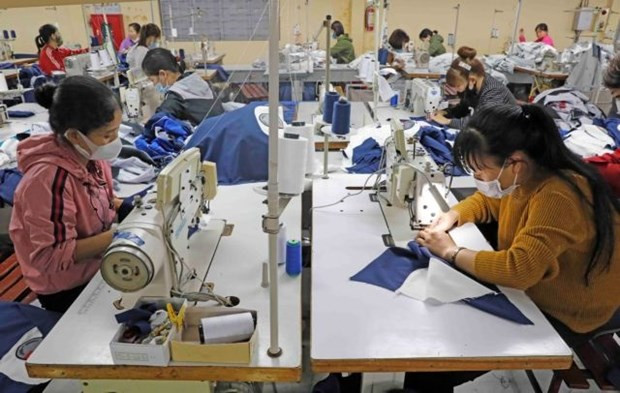Reaching 6% export growth this year will be a challenge: MoIT

Workers at a factory of Gia Toc Garment Export Company in Ly Nhan district, Ha Nam province. (Photo: VNA)
Industry insiders and policymakers have cautioned that Vietnam is facing an uphill battle to achieve its goal of 6% export growth this year.
Global demand for Vietnamese products has been dwindling, with the country’s major exports, such as furniture, footwear, and seafood, receiving far fewer orders than last year.
The General Department of Vietnam Customs revealed that, by the end of February, the country’s electronics exports had dropped by 13.9% to 6.87 billion USD compared to 2022.
Additionally, machinery and tools exports reported a 1.6% decline to 6.4 billion USD, while textile exports dropped by a significant 19.6% to 4.55 billion USD. Footwear and furniture exports also suffered losses, declining by 15.8% and 34.8%, respectively, to 2.76 billion USD each.
Mobile phones and parts remained among a handful of exports that reported a positive growth at 7.6%, or 9.42 billion USD, thanks to Samsung introducing its 2023 models earlier than usual.
The textile sector was particularly affected by lower global demand, according to Minister of Trade and Industry Nguyen Hong Dien, with a total export worth of 4.5 billion USD, a 20% decrease year-on-year.
“Lower demand in the world’s major markets such as the US and China, on top of a large inventory held by retailers, have resulted in fewer orders placed this year,” said Cao Huu Hieu, director-general of Vinatex, one of the country’s largest textile groups.
The seafood sector has seen fewer orders since the end of 2022, with demand from the US and the EU nosediving by 35% and 8%, respectively.
Vietnam’s seafood export during the first two months of the year was reported at 1.1 billion USD, a 26% decrease from last year. Tra fish, in particular, was down by 38%, shrimp by 37% and tuna by 27%.
Furniture was down by 35%, with the industry’s forecast remaining grim as large global markets such as the US and the EU will likely reduce spending due to inflation, economic setbacks and lower purchasing power.
Meanwhile, Vietnamese furniture makers still struggled to meet said market’s product origin and standards regulations. High inventory and a damaged distribution network after the pandemic were other contributing factors.
Several measures have been taken to support businesses, according to the Ministry of Industry and Trade (MoIT), including trade promotional and networking events.
Vietnam’s trade representative offices overseas have been told to step up efforts to help businesses enter new markets and resolve on-going issues with their entry.
The ministry said while businesses wait for traditional markets such as the US, the EU and Japan to recover, they must seek out other alternatives, especially markets in the Middle East, Eastern Europe, Latin America and South Asia.
Steering Committee for restructuring credit institution system established
Prime Minister Pham Minh Chinh has issued Decision 213/QD-TTg to establish a steering committee for restructuring the system of credit institutions.
Under the document, PM Chinh is the head of the committee while Deputy PM Le Minh Khai and Governor of the State Bank of Vietnam Nguyen Thi Hong are vice heads. Its members include leaders of ministries and departments.
The committee is responsible for supporting the PM to direct and implement solutions to restructure credit institutions associated with bad debt settlement following Decision 689/QD-TTg dated June 8, 2022, on approving the Scheme on Restructuring the credit institution system associated with the handling of non-performing loans for the 2021 – 2025 period, and amending and supplementing documents.
It is also responsible for proposing solutions for solving important problems, difficulties, and challenges in restructuring the system of credit institutions.




